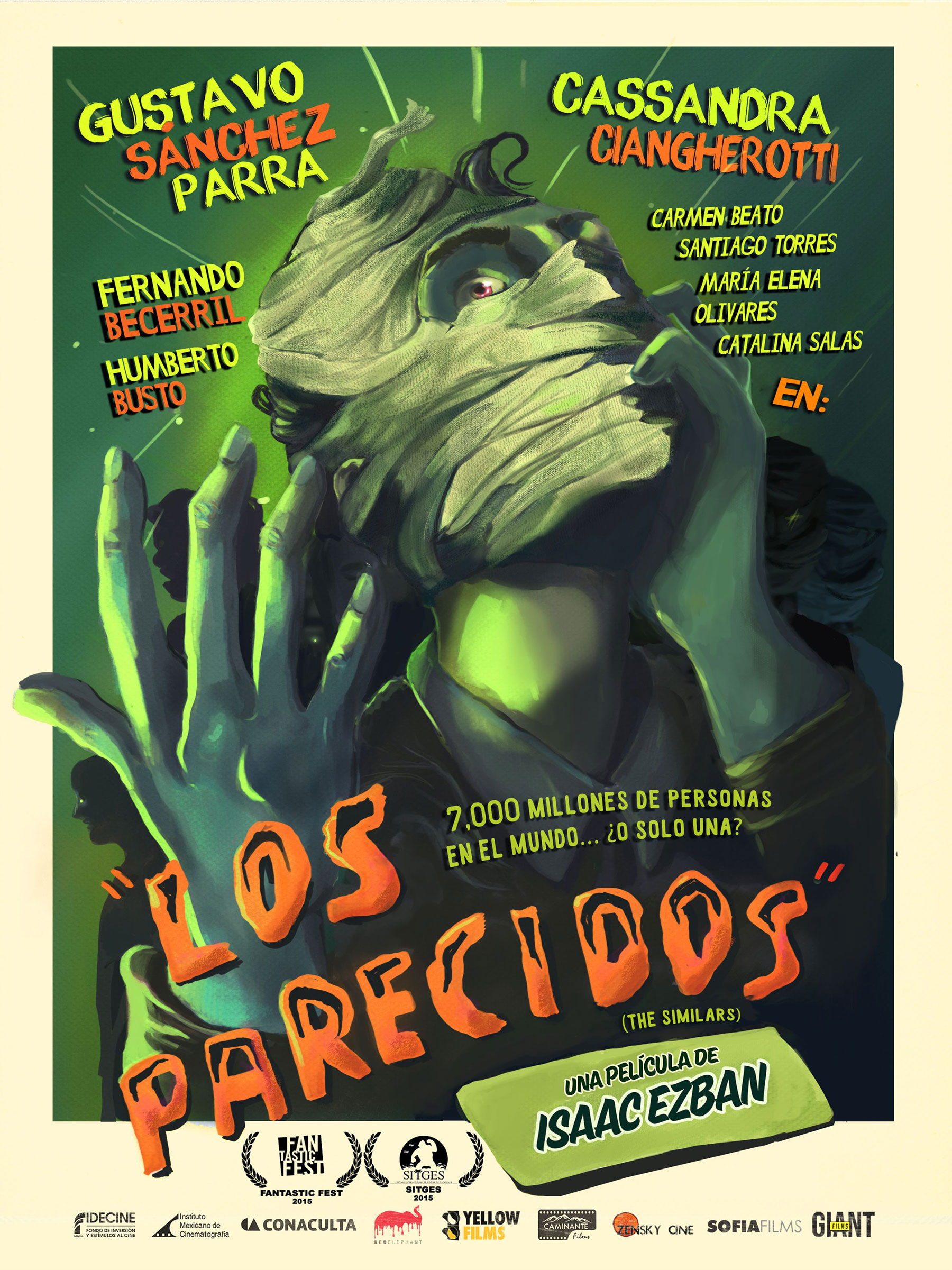It was a dark and stormy night in early October, 1968. Like, really stormy. So stormy that, according to radio broadcasts, the entirety of North America, and possibly the world, was enveloped in cloud and heavy rain. At a bus station a few hours drive from Mexico City, a man, Ulises (Gustavo Sánchez Parra), is frantic as he awaits the delayed bus into the city. He’s anxious because his wife has gone into a difficult labor, and he wants to be by her side. But, the rain has made travel impossible.
Ulises harangues the station agent, Martin (Fernando Becerril), who is set to retire and is uninterested in any of Ulises’s nonsense. Ulises calls the hospital in Mexico City, and the garbled call he has with his father-in-law does nothing to allay his fears.
Others soon arrive at the station, or are shown to already be there. They are Rosa (Catalina Salas), who is the attendant in the ladies’ restroom; Irene (Cassandra Ciangherotti), a mother-to-be who is fleeing her abusive husband; Alvaro (Humberto Busto), a medical student who is traveling to Mexico City to take part in the tragic protests at Tlatelolco; Roberta (María Elena Olivares), an indigenous Mexican, who practices native religious beliefs and speaks a language none of the others understand; and mother Gertrudis (Carmen Beato) and her ailing son Ignacio (Santiago Torres), who has one of the more awful-looking medical apparatuses wrapped around his neck that one will see in a movie.
Thus, the players are assembled in The Similars, a one-location horror flick that could also be adapted into a hell of a stage play.
The conceit of the film is that, one by one, the people in the bus station begin to take on the bearded and full-haired appearance of Ulises. Not their entire bodies and wardrobe, mind. But that, over the course of scene or act, each character’s head takes on Ulises’s unique visage. It’s not just the live characters, either. The transformation  happens to faces in photographs, and even to a statuette of Jesus. The film then follows the characters as they try and unravel why this is happening, and go back and forth blaming one another for the strange events in the film, before the secret is revealed. Martin is convinced it’s the work of the devil, while Alvaro sees in the transformations a plot by either the American or Mexican governments.
happens to faces in photographs, and even to a statuette of Jesus. The film then follows the characters as they try and unravel why this is happening, and go back and forth blaming one another for the strange events in the film, before the secret is revealed. Martin is convinced it’s the work of the devil, while Alvaro sees in the transformations a plot by either the American or Mexican governments.
At first glance, the ideas in the film could seem somewhat thin, like a plot more suited to an episode of The Twilight Zone or The Outer Limits. The film does pay heavy homage to those series, but writer/director Isaac Ezban fleshed out his idea to feature length, with little wasted screen time or throwaway plot points. It’s impressive that he did so while maintaining a brisk pace.
Rather than use CGI for the Ulises visages, makeup and prosthetics were used. And not just on the characters who begin to look like Ulises. In order to sell the idea more, Parra is slathered in makeup and wig, as well. That serves to make the job of transforming the other performers’ faces easier and more believable. Ulises’s face already looks somewhat off, so there’s nothing wrong, from the viewer’s perspective, with the makeup looking somewhat off on the others.
The film also bears aesthetic resemblance to sci-fi TV shows of the past. It was put through a wringer of digital filters, reducing saturation almost to black and white, contrast to almost nonexistent, with pops and crackles added to the final product, as if it is an old print that has seen better days. I feel that this treatment is on the wrong side of gimmicky, like a new photographer who falls in love with HDR, and it is a distraction. It being the only suspect decision in the film, a viewer should be able to get past it.
Setting the film on the eve of the Tlatelolco massacre will be lost on most viewers outside of Mexico, but there is a point to this, as revealed at the end of the film. Without spoiling anything, the story needed a tragic event to occur close in time to the events of the film, and this being a Mexican film, it makes sense to choose something prominent in that country’s history. Indeed, the massacre hovers over the film, almost like an unseen character or missing 4th act.
Ezban tells a story that is both bizarre and humorous. For a horror flick, it’s not frightening, even in moments of violence and bloodshed. He doesn’t use those trappings to draw a viewer in, instead relying on mystery and tension. If only other filmmakers could do so in such seemingly effortless fashion.
Ezban and company got fine work from the cast, the standout being, believe it or not, young Santiago Torres, who was all of ten years old when the film was shot in the summer of 2014 (the film was released the following year). Child actors tend to be of lesser quality than their adult contemporaries, but Santiago more than held his own against some true veteran professionals.
Gray and washed-out appearance aside, The Similars is a very entertaining mindfuck of a movie. This movie is so good that I’m sure Hollywood will butcher a remake. Can’t wait.
